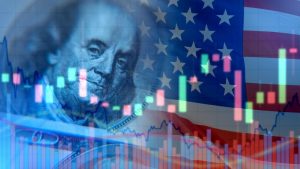
Recent political turmoil in the US, and the global impact of the coronavirus pandemic has seen the US dollar fall to its lowest levels since April 2018. With the negative effect on the dollar forecasting a downward trajectory for 2021, let’s take a further look at the factors that have caused this fall.
Joe Biden’s Victory
Since the US elections in November 2020, there has been some volatility in the market for the US dollar, as political uncertainty has been rife in the USA ever since. Not only has there been a victory across both the Congress and Senate for the Democratic party, but the US saw an unprecedented storm on Capitol Hill, alongside recent plans from the Democrats to introduce a motion for the removal of Donal Trump from office. If Mike Pence, the vice-president, does not act upon this and take over, then there is the intention to vote to impeach Mr Trump.
The recent Senate win for Joe Biden’s Democratic party has caused financial analysts to consider their projections of a bearish run for the US dollar. There is also the speculation that the victory for the Democrats will actually add to the pressure and fall of the US dollar as the year continues.
This is based on the economic boost that has been pledged by the president-elect, expanding the $900 billion stimulus increase agreed in Congress, and adding to the idea that more government spending will cause inflation to rise, depending on the actions of the Federal Reserve also.
However, just as some financial experts are predicting the gloomy effects of the Democratic win, some think that Biden’s proposal for a massive increase in stimulus, and its approval through Congress, will cause a forecasted economic growth throughout 2021 and 2022. Therefore, having a positive effect on the movement of the US dollar. This has been reinforced by a slight bounce back of the dollar in January 2021, due to some certainty regained amongst political chaos, and that the Democratic control of Congress and likelihood of inflation, will increase attraction from foreign investors and demand for the currency.
Coronavirus Pandemic
The COVID-19 pandemic has had a huge impact on the global economy. As a result, the Federal Reserve took drastic action to counteract the disruption that the coronavirus crisis has caused. Last year, the US saw interest rates cut dramatically, and there are expectations that this will only continue, and therefore a continuous fall of the dollar.
The lack of appeal of the US dollar has seen investors turn to riskier areas of the market and trade in other currencies, such as the Euro and China’s Renminbi. Investors have also turned to Contract for difference (CFD) trading to access a range of currency pairs, with the opportunity to speculate on riskier price movements without owning the underlying asset.
Currency analysts have expected that the current and future loss in the dollar, compared to other assets, is due to investment in currencies that are connected to commodity markets and are set to rise in a global economy boom. This has been reinforced with a strong recovery in Asia and the roll out of multiple vaccines, adding to the reduction of interest in the US dollar.
Despite a surge in coronavirus cases and national lockdowns, and their effect on major economies, the COVID-19 vaccines have caused confidence in the recovery of the global economy. With some clarity in the future of the virus and its demise, and the hope of global financial recovery, the usual safe haven of the US dollar has diminished appeal for investors.
However, some analysts speculate that the US will be one of the first countries that will have the ability to manufacture and implement the vaccines to its population, with the outlook that this will add to economical growth.
As the new year begins, it seems that a volatile market for the US dollar is set to continue, as there is a combination of riskier movement from investors, the effects of Democratic plans and increased stimulus, alongside the pandemic and roll out of vaccines, and the future rates put in place by the Federal Reserve.
Tradersdna is a leading digital and social media platform for traders and investors. Tradersdna offers premiere resources for trading and investing education, digital resources for personal finance, market analysis and free trading guides. More about TradersDNA Features: What Does It Take to Become an Aggressive Trader? | Everything You Need to Know About White Label Trading Software | Advantages of Automated Forex Trading









